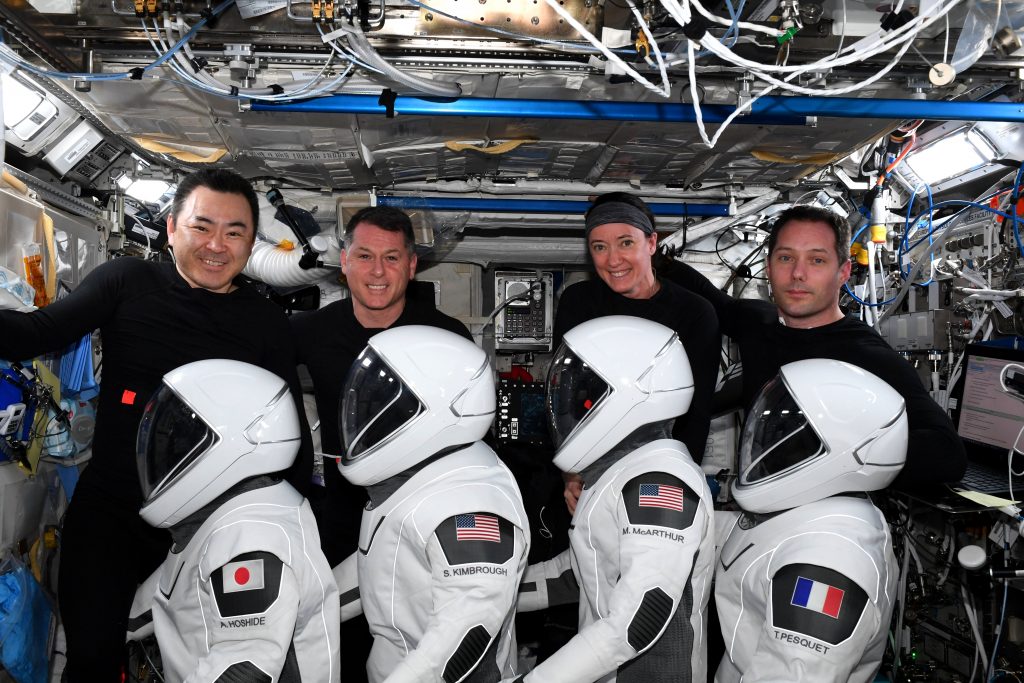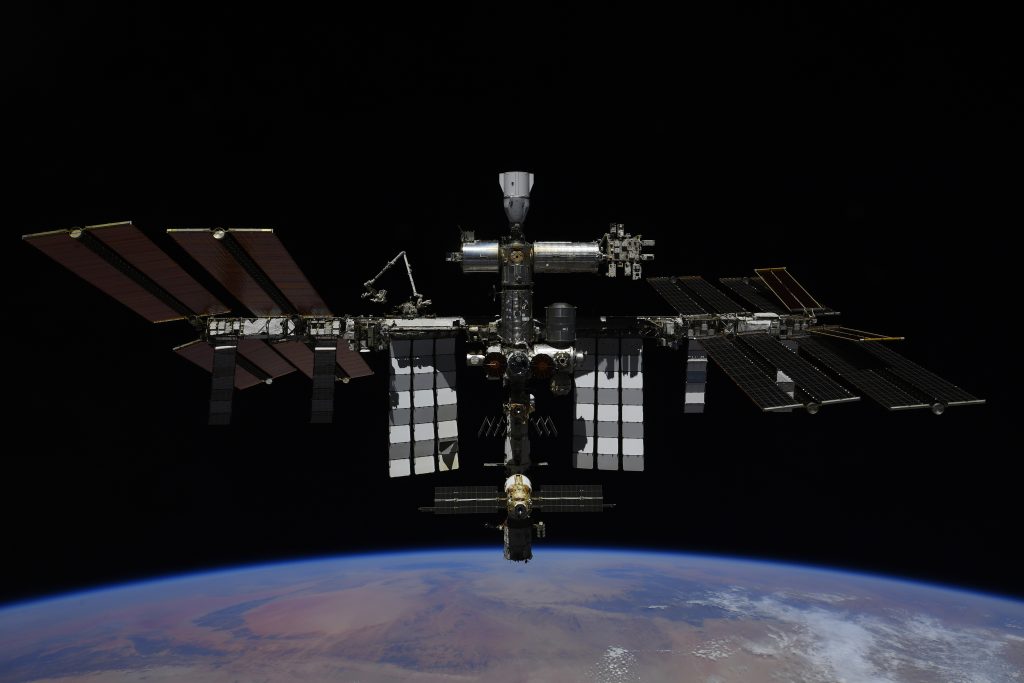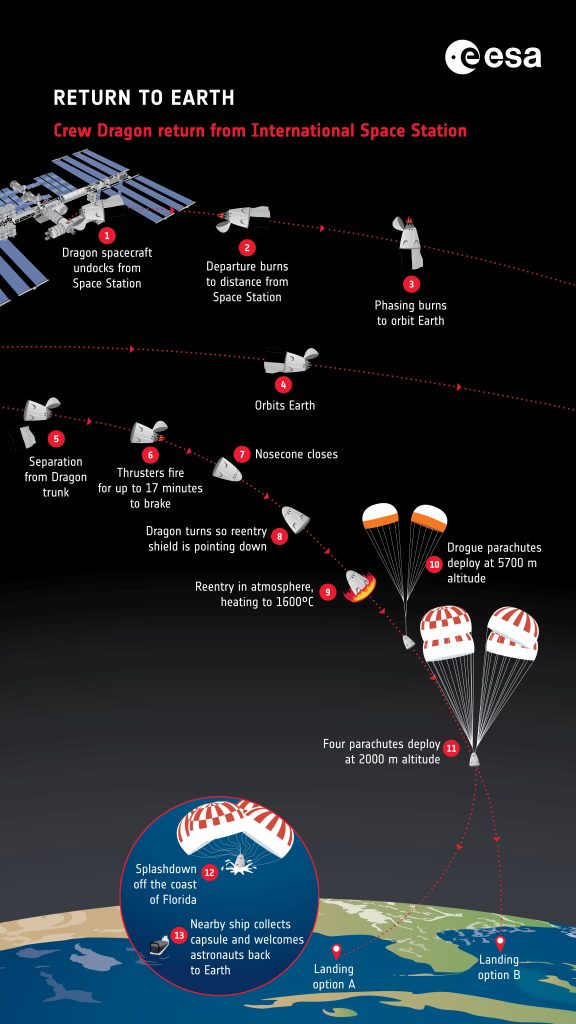After almost 200 days in space it is time to return to planet Earth for ESA astronaut Thomas Pesquet, JAXA astronaut Aki Hoshide and NASA astronauts Shane Kimbrough and Megan McArthur. Today at 16:45 GMT (17:45 CET) they will say farewell to their colleagues, NASA astronaut Mark Vande Hei and Roscosmos astronauts Pyotr Dubrov and Anton Shkaplerov and enter their Crew Dragon capsule for the return home. Watch live on ESA’s Web TV.
Splashdown is scheduled for 10 hours after the hatch is closed, an intense trip that will see the astronauts circle Earth around six times.
The departing crew, Crew-2, will put on their spacesuits for the ride home, they will protect them in emergency such as a loss of pressure or fire.
The hatches between the SpaceX Crew Dragon Endeavour and the International Space Station will close and be checked for airtightness – a process that will take about an hour.
Undocking is a soft push off the Station as the hooks holding the spacecraft to the outpost are released, scheduled for 19:05 GMT (20:05 CET). Two small undocking burns push the spacecraft away roughly five minutes after the undocking command is given. The four astronauts are now flying free from the Station and splashdown will be roughly eight hours away.
Before they head on their way the Dragon’s thrusters will fire to orchestrate a slow and graceful fly-around of the International Space Station, a majestic last view of the outpost for the crew inside that will take almost two hours.
At 21:00 GMT (22:00 CET) the first of the departure burns is scheduled, with Dragon thrusters firing for just 15 seconds to move out of the Space Station’s range. A second burn lasting 21 seconds will push the Dragon to 6 km away from the Station.
From here longer burns are conducted after orienting the Dragon correctly. A third and fourth thruster burn, lasting up to a minute will further distance the spacecraft from the International Space Station.
The spacecraft will now be in its own separate orbit around Earth and the astronauts inside can enjoy the views of our planet one last time and prepare for splashdown.
The time they stay in orbit changes for each return, but Crew-2 are scheduled to spend just under two hours circling Earth before kicking in the final phase of the voyage.
A departure phasing burn planned for 02:09 GMT (03:09 CET) will set the Dragon to be in position for the final reentry.
At 02:33 GMT (03:33 CET) the Dragon’s trunk used for external or unpressurised cargo will be discarded. It does not survive re-entry and is left to burn up harmlessly in the atmosphere.
The Dragon now consists of only the landing capsule with the four astronauts inside. A very long braking burn is next: the thrusters fire for over 16 minutes to decelerate and put the spacecraft on a path to splashdown off the coast of Florida.
The Dragon’s nosecone is closed for more protection and the spacecraft orients itself to get ready to deploy its parachutes.
Passing through our atmosphere the heat-shield protect the spacecraft and its passengers from intense heat from the friction of flying at huge speeds through air for the first time in 199 days. The heat generated from the friction is so extreme the spacecraft becomes surrounded by a ball of plasma, cutting all radio communication for over five minutes.
So called drogue chutes are deployed roughly five kilometres above Earth, at around 03:29 GMT (04:29 CET). These small parachutes are dragged by the wind and pulled up like a kite pulling the main parachutes out with them. This occurs roughly three minutes from splashdown, from this moment the four astronaut will glide down on the parachutes and await the impact with the sea.
A boat will be nearby and come to collect the capsule and welcome the four astronauts home. From there they take a helicopter to the Florida, USA, mainland, and then aircrafts to their destinations. Thomas will change planes and get on a transatlantic flight to land in Cologne, Germany, accompanied by his flight surgeon.






